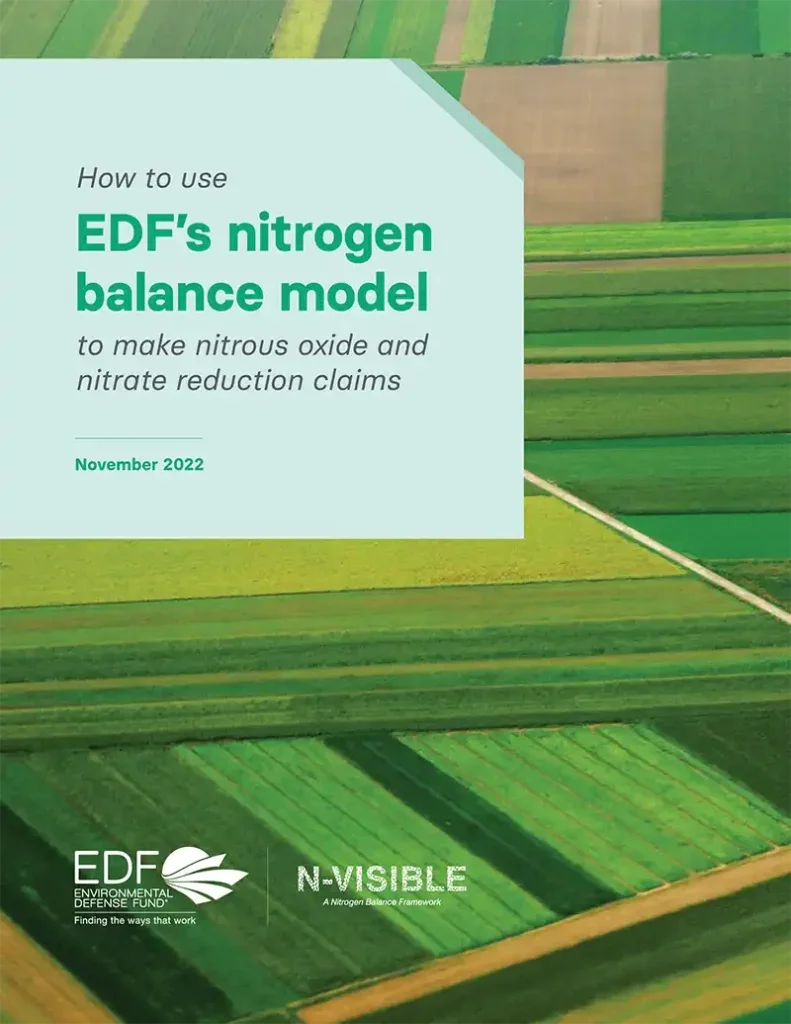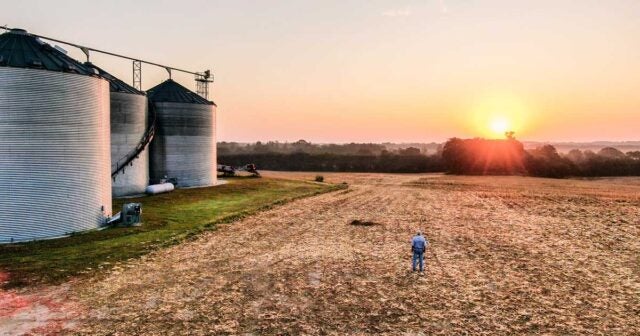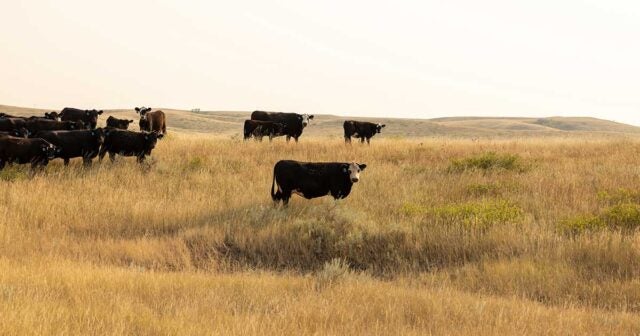- Resources
- Making the invisible loss of nitrogen visible, for farm and future
Resources
Making the invisible loss of nitrogen visible, for farm and future
Published: November 16, 2022 by Alison Eagle, EDF
A robust and practical way to measure and report climate progress, for farm and future
Nitrogen — which is often added to farm fields through commercial fertilizer, manure or leguminous plants — is essential for feeding and clothing eight billion people around the world, and counting. But serious problems occur when fields have too little or too much nitrogen.
Too little lowers crop yields and depletes soil health. Too much accelerates climate change and degrades water and air quality. But until now, measuring and monitoring excess nitrogen has been expensive, inaccurate and difficult to scale.
Environmental Defense Fund’s nitrogen balance (N balance) model overcomes those challenges. It provides a user-friendly, scientifically robust way for food and agriculture companies to assess environmental results and report progress.
Scientists widely accept N balance as the preferred metric for measuring the risk of nitrogen losses to the environment. It is calculated as the nitrogen added to a farm field minus nitrogen removed during harvest. The remaining nitrogen is vulnerable to being lost to the air as nitrous oxide — a powerful greenhouse gas 300 times stronger than carbon dioxide — and to the water as nitrate — a contaminant to drinking water and ecosystems.
Grounded in science, good for farmers
N balance focuses on the variables that are within a farmer’s control and is calculated with minimal data that is easy for farmers or their trusted advisers to collect.
By measuring their N balance scores at the field or farm scale year over year and striving to achieve scores in the safe zone, farmers can ensure they’re optimizing yields, minimizing excess nutrients and protecting long-term soil health.

A breakthrough to eliminate nitrogen losses
EDF scientists developed two breakthrough environmental models that calculate changes in nitrous oxide emissions and nitrate leaching using aggregated and anonymized N balance scores from across a watershed or sourcing region.
This makes it easier and more accurate for food and agriculture companies to report progress toward climate and water quality goals for their direct operations and supply chains. Currently, many of these companies measure progress by counting acres of practice adoption — which can be an inaccurate proxy for environmental impact — or using complicated, data-intensive models — which can be cumbersome and provide few benefits to farmers.
EDF’s N balance model equips companies to drive measurable environmental benefits at scale.
How-to guide for reporting environmental progress
How to use EDF’s N balance model to make nitrous oxide and nitrate reduction claims is an open-source, straightforward way for companies to apply these scientific advancements to their annual environmental reporting.
The guide provides instructions for how to collect and aggregate N balance data, use EDF’s environmental models to quantify nitrous oxide and nitrate pollution, and report year-over-year progress toward climate and water quality goals.
- This updated guide builds on previously published resources. In its appendix, you can find, the following four foundational implementation modules. A robust and practical way to measure excess nitrogen
- How to calculate nitrogen balance
- What the nitrogen balance safe zone indicates
- How to use nitrogen balance to estimate nitrous oxide and nitrate losses
How to use EDF’s nitrogen balance model
to make nitrous oxide and nitrate reduction claims

Additional resources
-
Quantifying on-farm nitrous oxide emission reductions in food supply chainsLearn more
-
Luck versus skill: Is nitrogen balance in irrigated maize fields driven by persistent or random factors?Learn more
-
The nitrogen balancing act: Tracking the environmental performance of food productionLearn more

-
Financial Solutions for Agricultural ResilienceLearn more


